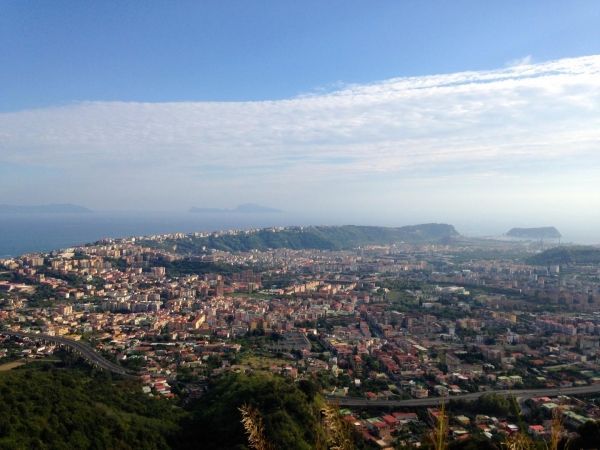The caldera-forming eruption of Campi Flegrei (Italy) 40,000 years ago is the largest known eruption in Europe during the last 200,000 years, but little is known about other large eruptions at the volcano prior to a more recent caldera-forming event 15,000 years ago. A new Geology article by Paul Albert and colleagues discusses a 29,000-year-old eruption, here verified as coming from Campi Flegrei, that spread a volcanic ash layer more than 150,000 square kilometers of the Mediterranean.
Knowledge of large explosive eruptions is mostly established from geological investigations of the exposed deposits found around the source volcano, with the deposits of large eruptions forming thick sequences. However, since the late 1970s, a widespread volcanic ash layer, dated at about 29,000 years ago, was commonly identified in marine and lake sediment cores from across the Mediterranean, documenting the occurrence of a large-magnitude eruption. Despite this widespread distribution and relatively young age, no clear evidence of such an event was identified at any of the main active volcanoes in the region.
In this study, the team’s detailed chemical analysis (volcanic glass) of an eruption deposit found five kilometers northeast of Campi Flegrei caldera in Naples, Italy, are entirely consistent with the distinctive composition of this ash layer. This, combined with new dating of the near-source eruption deposit, verifies that Campi Flegrei was responsible for this widespread ash layer.
Constraints on the size of the eruption were determined by the team using a computational ash dispersal model which integrated the thicknesses of the near-source eruption deposits, named here the Masseria del Monte Tuff, with those of the related ash fall across the Mediterranean.
Read more at Geological Society of America
Image: View of the eastern part of the populated Campi Flegrei caldera from the Camadoli Hill. The volcano is the source of the Masseria del Monte Tuff eruption 29,000 years ago. More than 300,000 people live within this active caldera that has experienced more than 60 eruptions in the last 15,000 years. One of these recent eruptions formed the small Nisida cone that is seen lying just off the mainland. The Bay of Naples and Capri can be seen in the background. (Credit: Photo by Victoria Smith)


